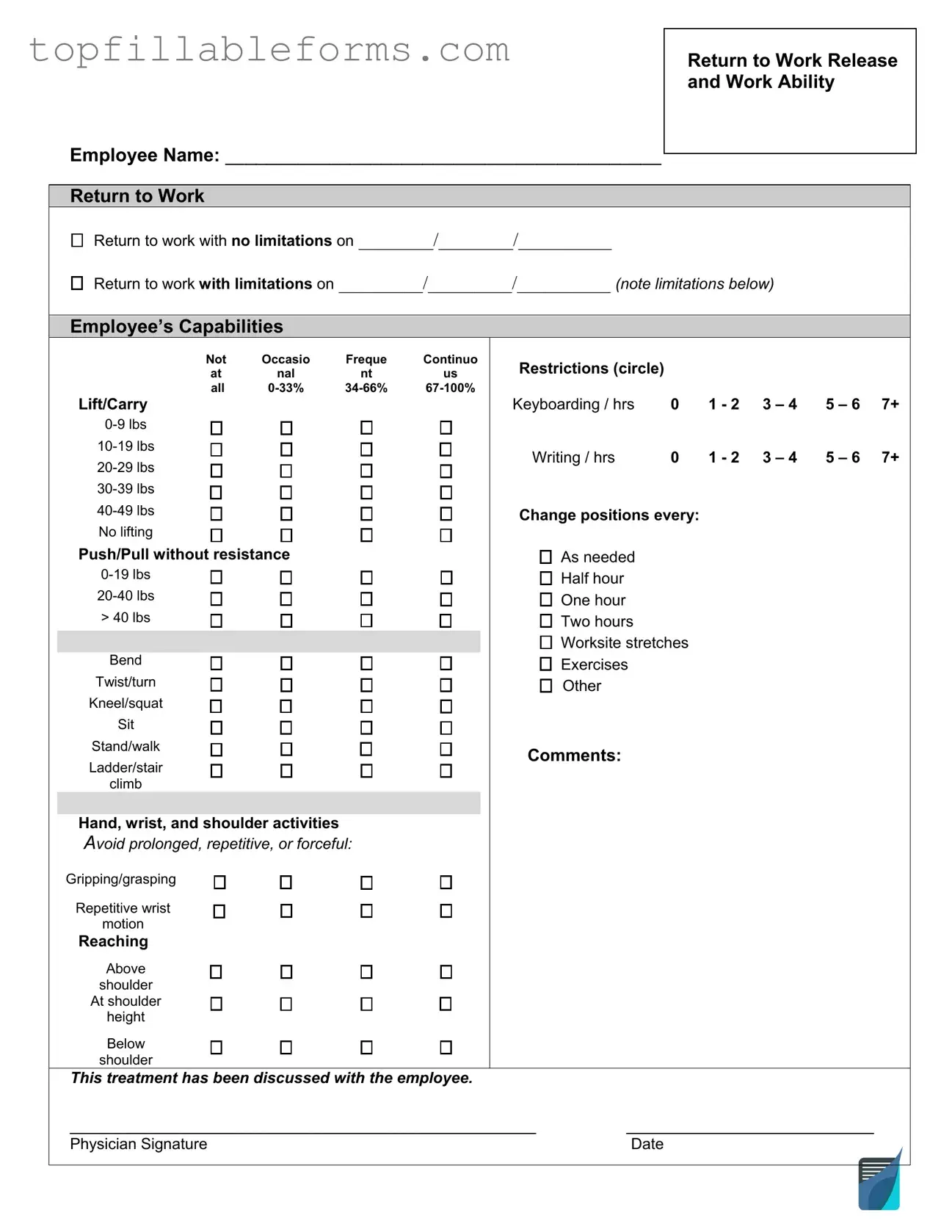-
What is a Work Release form?
A Work Release form is a document that allows individuals to leave their regular place of confinement, such as jail or a detention center, for the purpose of employment. This form is often used by those who are serving time but wish to maintain their job and support themselves and their families.
-
Who can apply for a Work Release?
Typically, individuals who are currently incarcerated and meet specific eligibility criteria can apply for a Work Release. This may include good behavior, the nature of the offense, and the length of the sentence. Each jurisdiction may have different requirements.
-
What information is required on the Work Release form?
The form usually requires personal information, such as the individual's name, identification number, and contact details. It may also ask for details about the employer, job responsibilities, and the hours of work. Additional information about the reasons for the request may be necessary.
-
How is the Work Release form submitted?
Individuals typically submit the Work Release form to the appropriate authority within the correctional facility. This may include a warden or a designated officer. The submission process may vary, so it is important to follow the specific guidelines provided by the facility.
-
What happens after submitting the Work Release form?
Once the form is submitted, it will be reviewed by the appropriate personnel. They will assess the application based on the established criteria. The individual will be notified of the decision, which may take several days or weeks, depending on the facility's process.
-
Can a Work Release be revoked?
Yes, a Work Release can be revoked. If an individual violates the terms of their release or engages in misconduct, the authorities may terminate the Work Release privileges. This could result in returning to confinement.
-
Are there any fees associated with the Work Release?
Some facilities may charge a fee for processing the Work Release application or for the program itself. It's advisable to check with the specific facility for any potential costs involved.
-
Can I work anywhere I want?
No, individuals must typically work for an employer that has been approved by the correctional facility. The employer must meet certain standards and agree to comply with the facility's requirements.
-
How long can I participate in a Work Release program?
The duration of participation in a Work Release program can vary. It may depend on the individual's sentence length, behavior, and the policies of the correctional facility. Regular reviews are conducted to assess continued eligibility.
-
What should I do if my Work Release application is denied?
If a Work Release application is denied, individuals can typically request a review of the decision. They may also seek guidance on how to improve their chances for future applications. Understanding the reasons for denial can help in addressing any issues.

